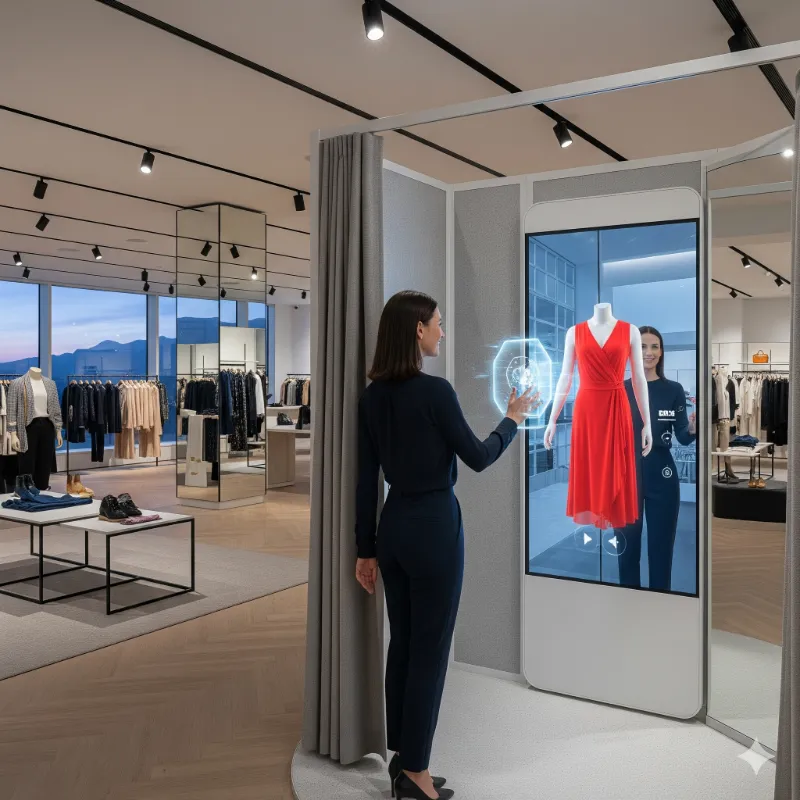Nowadays, point-of-sale advertising for cosmetics is undergoing a complete reset, almost as if everything learned so far had to be rewritten. It’s no longer enough to simply fill a shelf with attractive products; now, brands aim to leave a mark, betting on experiences that are different, smart, and, at the same time, respectful of the planet. By 2025, those truly setting trends will combine eco-design and the latest technologies, such as augmented reality, to win over demanding and hyper-connected consumers. Truth be told, this approach is doubly useful: it beautifies the space and significantly boosts sales—sometimes by as much as 30% in key segments.
Which materials will define sustainable POS displays in cosmetics?

There is no doubt that sustainability is no longer just another trend; it has become indispensable in Point-of-Sale (POS) advertising. Pioneer brands in the sector, often acting like visionaries, have made eco-design the basic rule for their displays. This isn’t only a response to increasing consumer demand but also a responsibility companies assume towards the environment. The sector has gradually shifted away from single-use materials and now values much more those options that, like tending a garden, seek to leave the smallest possible footprint after their lifecycle.
One favorite, and here to stay, is recycled cardboard. It’s not only affordable and easy to handle but also very customizable. Think of it as the “play-dough” of display design: flexible enough to create structures from scratch or elegant, lightweight counters that are quick to assemble. On top of that, other conscious materials are gaining ground in the new generation:
- FSC-certified wood: Guarantees responsible sourcing and helps maintain healthy forests.
- Recycled and biodegradable plastics: Give plastic a second life while avoiding reliance on unsustainable sources.
- Reusable aluminum: Like a reliable friend, it withstands endless recycling without losing quality.
- Plant-based or water-based inks: Significantly reduce environmental impact compared to more traditional chemical solutions.
Cosmetic giants like L’Oréal with projects such as L’Oréal for the Future or Natura with its biodiversity crusade don’t just follow trends—they almost set the rules. Although sometimes discreet about details, they’ve developed eco-friendly, dismantlable displays (such as Garnier’s), proving that sustainability is perfectly compatible with powerful campaigns. Being able to easily dismantle displays, of course, makes recycling at the end of a campaign much simpler.
How does eco-design integrate with functionality?
Doing the right thing for the planet doesn’t mean sacrificing practicality; in fact, modern designs are moving exactly in that direction. Innovators in the field have learned to combine sustainability with commercial performance. Increasingly, solutions are emerging where, for example, the very boxes shipped to stores unfold into ready-to-use displays in seconds—like transformers. This not only saves materials but also reduces waste and logistics. The key lies in considering the entire life cycle of the display, from creation to dismantling, ensuring it remains visually attractive while being recyclable at the end.
How to integrate technology for an immersive shopping experience?

Technology has taken the lead in shaping the in-store experience—and customers are keeping pace. Powerhouses like L’Oréal and Estée Lauder are strongly committed to digitalizing the shopping moment, making it more personalized, memorable, and engaging than ever. Their goal is to merge the best of physical and digital experiences, transforming the classic display into a truly interactive touchpoint.
Interactive screens and touch-responsive displays are now fairly common. As soon as a shopper approaches, they can flip through full catalogs, watch tutorials, read reviews, or even get personalized advice from AI systems that seem to know them inside out. Waiting at the counter is no longer boring—it becomes a chance to play, discover, and test. And the more time a consumer spends in front of the display, the higher the likelihood of purchase.
Augmented reality and virtual try-ons: the future is here
Among the most disruptive innovations, augmented reality (AR) stands out for turning a simple showcase into an experience. Virtual mirrors, for example, are revolutionizing how products are tested.
What benefits do smart mirrors provide?
Thanks to companies like ModiFace (operating under L’Oréal), shoppers can now digitally “try on” dozens of products (lipsticks, eyeshadows, you name it) within seconds—without any physical contact. The advantages are hard to overlook:
- Hygienic experience: With no need to use common testers, the process is safer and more reliable.
- Unlimited testing: Customers can play with endless shades and styles without physical constraints.
- Advanced personalization: Intelligent algorithms tailor recommendations based on skin tone and facial features.
- Higher conversion rates: Seeing realistic results speeds up and secures purchase decisions.
Blending technology with sustainability—obvious yet often elusive—is critical. Displays now boast recycled materials and modular designs, proving that innovation and environmental care can and should go hand in hand.
How to bridge the gap between the physical store and the digital world?
Today’s consumer may prefer brick-and-mortar shopping one day and online browsing the next. The challenge for POS is to build a credible bridge between both worlds. Simple technologies like QR codes and NFC (Near Field Communication) have become daily allies to connect physical experiences with each brand’s digital universe.
While public information about luxury brands such as Lancôme or MAC Cosmetics using these tools in Spain is still scarce, the direction is clear. With a single tap or scan on a display, this can happen:
- Customers are directed to detailed product information pages.
- They can watch tutorials on how to use the product.
- Exclusive promotions or prize draws become accessible.
- Loyalty program sign-ups take just minutes.
Beyond making life easier for the shopper, brands collect valuable data to refine future campaigns and better understand consumer behavior. Measuring POS campaign impact also becomes faster, as it allows analysis of which products attract the most attention. In luxury cosmetics, it goes even further, ensuring authenticity of products purchased and reinforcing trust.
Can POS displays be modular and more cost-effective?
In a world where launching new products or refreshing store layouts each season is the norm, flexibility is priceless. Modular, reusable POS designs have emerged as the smart, eco-friendly alternative to traditional displays that always ended up discarded after a campaign.
Brands like Rituals or Natura have embraced this concept, even if not loudly advertised, and the benefits are clear:
- Adaptability: Switching messages, designs, or sizes is as simple as swapping parts.
- Cost savings: Reusing existing systems significantly reduces the need for brand-new displays for every promotion.
- Optimized logistics: These systems are generally easy to dismantle and transport, cutting expenses and effort.
- Sustainability: Extending the lifecycle of each display is one of the most effective ways to reduce environmental impact.
Many of these displays use recycled cardboard or aluminum and allow for striking customizations without losing brand coherence. They’re a fresh, practical, and eco-sensible solution for keeping stores always up to date.
How to measure the real success of a POS campaign?
For a marketing strategy to endure, it must prove its value; otherwise, even bold players like Sephora or L’Oréal Spain wouldn’t sustain it for long. There are rigorous ways to calculate what POS contributes. Interestingly, the key often lies not in visual impressions but in data—comparing results and drawing objective conclusions about how shoppers interact with displays.
It’s not only about spotting overall trends, but also about comparing stores with and without active POS, analyzing behavior shifts, and collecting fresh customer feedback.
Key Metrics
| Metric | Description |
|---|---|
| Sales increase | Comparing sales during the campaign with other periods shows the concrete impact. |
| Conversion rate | The percentage of visitors who turn curiosity into actual purchases thanks to the display. |
| Average ticket growth | Reveals whether shoppers add more products during the campaign. |
| Traffic and dwell time | Measures how many are drawn to the display and how long they stay engaged. |
| Brand recall | Surveys assess whether the campaign made the brand stick in consumers’ minds. |
| Qualitative feedback | Captures direct impressions from customers and employees about clarity and appeal. |
These insights come from tools like people-counting sensors, heat maps tracking customer movement, and advanced sales analytics. A/B testing—where different displays are trialed in twin stores—is another nearly foolproof way to continuously improve outcomes.
Conclusion
POS in cosmetics has evolved from being decorative to becoming a living system where design, sustainability, and technology merge to create unique experiences. Winning brands will be those that view the point of sale as far more than a showcase: it’s a channel to inspire, educate, and drive purchases. And if they can measure and optimize the entire process, success is inevitable.
From now on, beauty retail is moving toward visible integration of these trends. Digital personalization, environmental commitment (reflected in materials and processes), and modular displays already work together like gears in a modern POS strategy. Preparing for this transformation is essential for any brand that wants to remain relevant in the competitive cosmetics market. Evolution, rest assured, will keep moving forward relentlessly.

